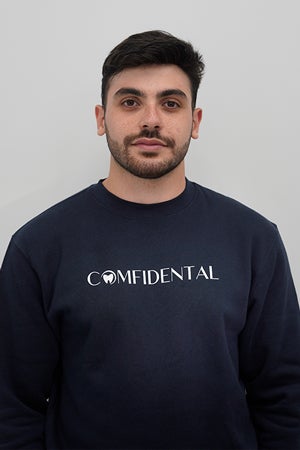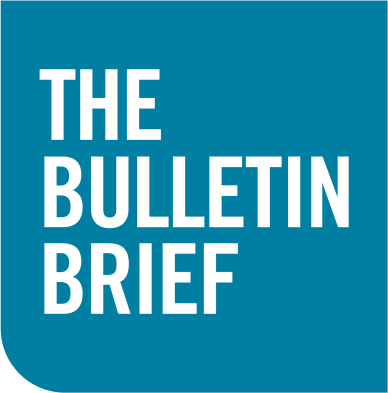Dentistry student's breathable dental dam to enhance patient comfort

(photo by Ali Rezazadeh Shirazi)
Published: April 24, 2025
Arshia Sabet was in his first year of dental school at the University of Toronto when he realized he couldn’t tolerate rubber dental dams due to chronic allergies and blocked nasal passages, which often forced him to breathe through his mouth.
Commonly used for root canals and fillings, dental dams are thin sheets of rubber placed across the mouth to isolate teeth while dental work is performed, preventing fluids and debris from being swallowed. But they also prevent many patients from breathing easily.
Sabet was determined to find a way to make the experience more comfortable.
“I knew I could create a more breathable dam because similar materials exist in cell phone microphones,” says Sabet, a doctor of dental surgery candidate at U of T’s Faculty of Dentistry. “By embedding a membrane within the dam, it allows airflow while still preventing fluids and dental materials from passing through.
“Giving patients the ability to breathe through their mouths can also help them relax and decrease any anxiety they might be feeling during their procedure due to shallow breaths.”
The result is ComfiDam, which the startup that Sabet co-founded – ComfiDental Labs Inc. – is billing as the world’s first breathable dental dam.

Sabet began working on prototypes in early 2024 alongside Asra Khonsari, a dental student at the University of Manitoba. That summer, he showed the prototype to Greg Anderson, an assistant professor, teaching stream, in the Faculty of Dentistry, with the prototype, who validated the problem Sabet wanted to address and provided feedback on the device’s membrane.
After filing for a patent, Sabet says he was approached by one of the largest dental companies in the world about the product.
He is now in the development and fundraising stage and is being supported by U of T’s Health Innovation Hub (H2i) accelerator, where he works with Paul Santerre, a professor in the Faculty of Dentistry and Institute for Biomedical Engineering, and dental startup adviser Travis Rodgers.
Sabet has also been supported by two of his classmates, Ali Aghamohammadi and Hareet Sidhu, as well as Dalhousie University dental student Sara Arbabzadeh.

Sabet says he has learned a lot about the world of medical entrepreneurship, including the patent, safety and marketing aspects of developing and commercializing a new product. He credits the Faculty of Dentistry with providing some key insights that have helped him as both a student and an entrepreneur.
“One thing I’ve learned in dental school is if you make a mistake, you have to fix it fast,” he says. “I applied the same approach while developing this product – it’s important to be OK with making mistakes, taking feedback and finding the solution.”
As for his advice for other aspiring entrepreneurs, Sabet suggests thinking about the solution that’s needed rather than the invention itself.
“It’s not always important to focus on the product you can make; it’s about focusing on the problem that already exists,” he says.
“It’s more important to be problem-focused than product-focused.”



